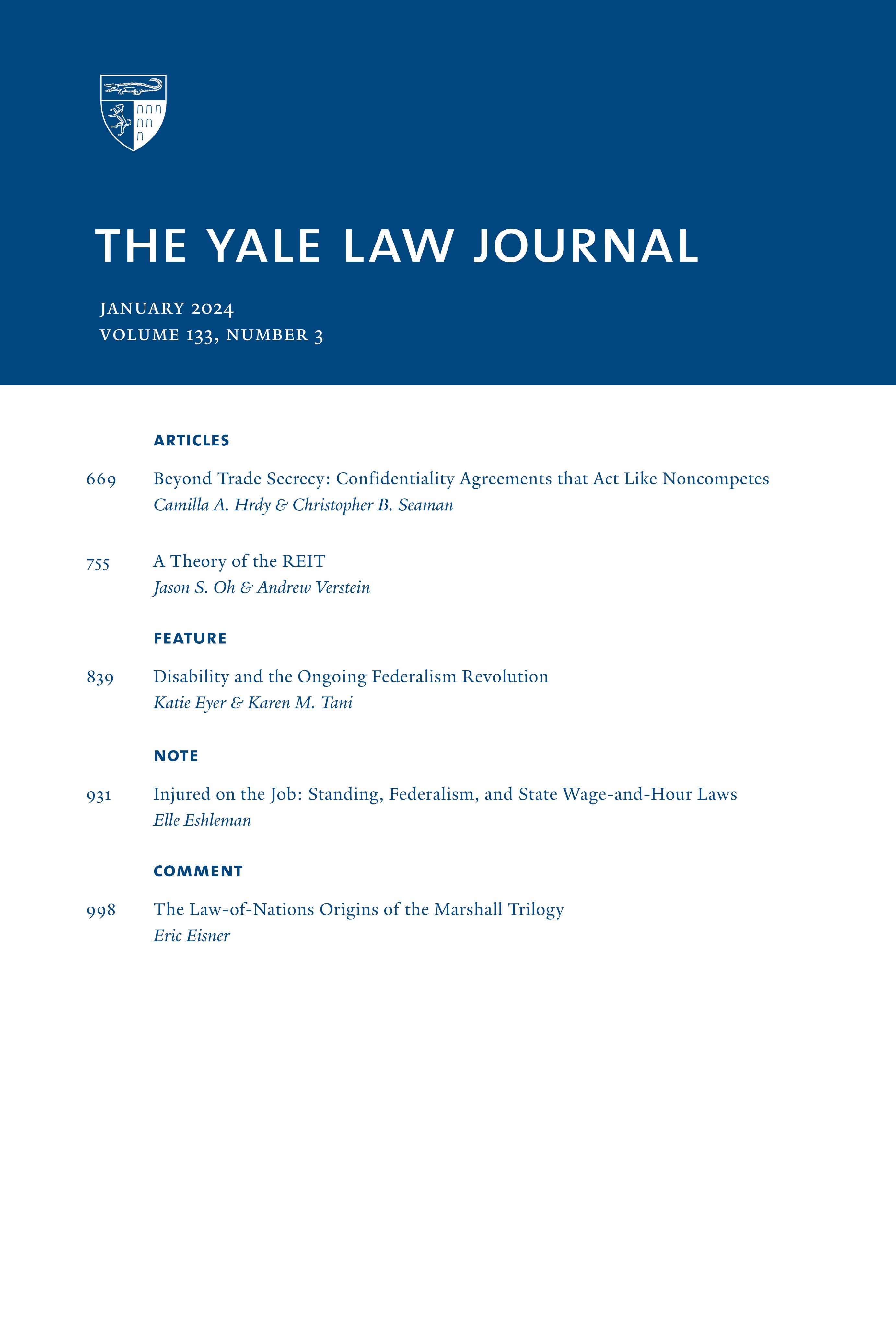The Arc of the Pendulum: Judges, Prosecutors, and the Exercise of Discretion
IF 5.2
1区 社会学
Q1 LAW
引用次数: 48
Abstract
Early analyses of the federal Sentencing Guidelines focused on the transfer of sentencing authority from judges to the Sentencing Commission; more recent analyses have noted the transfer of discretion from judges to prosecutors. Of equal significance are two other power struggles: between local federal prosecutors and officials in the Department of Justice, and between Congress and the Supreme Court. In its 2005 decision in United States v. Booker, and its recent decisions elaborating Booker, the Supreme Court made a high-stakes move that boldly asserted significant responsibility and authority in sentencing judges, local prosecutors, and the Supreme Court itself. Although it was not the goal either of sentencing reformers, the actual result of the Guidelines regime that took effect in late 1987 was to transfer sentencing authority not to the United States Sentencing Commission, but to federal prosecutors and - particularly in recent years - to the Department of Justice in Washington. Congress' 2003 decision, in reaction to sentencing data that appeared to reveal that sentencing judges were willfully ignoring the Guidelines in a growing proportion of cases, to enact the Feeney Amendment represented a direct challenge to every level of the federal judiciary, to the Sentencing Commission, and to line-prosecutors. By design, this legislation, Feeney simultaneously empowered Congress' partner in the endeavor, the Justice Department in Washington. Booker (as well as Booker's immediate predecessor, Blakely v. Washington, and Booker's progeny handed down in 2007) can be understood as a collective decision by the Supreme Court - which for more than a decade had been loathe to intervene or even seriously analyze constitutional and other issues raised by the Guidelines - that it was constitutionally and institutionally obliged to act in order to undo the Feeney Amendment, to constrain the leverage that inheres in prosecutors in a mandatory sentencing regime, and to counteract the centralizing impulse of the Department of Justice. By introducing the opportunity for judges openly to exercise judgment independent of the Guidelines, Booker and its progeny not only allow judges to provide a counterweight to prosecutorial leverage over defendants, but may also counteract the constraints that the Justice Department moved to impose (in the wake of the Feeney Amendment) on line-prosecutors. Once again, sentencing is primarily a local event. After Booker, the Department in Washington may be calling signals, but the decision-makers on the playing field - prosecutors and their judges - need not hear the calls or abide by them.钟摆的弧度:法官、检察官和自由裁量权的行使
对联邦量刑准则的早期分析侧重于将量刑权从法官移交给量刑委员会;最近的分析注意到裁量权从法官转移到检察官。同样重要的还有另外两场权力斗争:地方联邦检察官与司法部官员之间的斗争,以及国会与最高法院之间的斗争。在2005年“美国诉布克案”(United States v. Booker)的判决以及最近对布克案进行详细解释的判决中,最高法院做出了一个高风险的举动,大胆地主张在判决法官、地方检察官和最高法院本身方面负有重大责任和权威。虽然这也不是量刑改革家的目标,但1987年底生效的《准则》制度的实际结果是将量刑权移交给联邦检察官,而不是美国量刑委员会,特别是在最近几年,移交给华盛顿的司法部。2003年,由于判决数据显示,在越来越多的案件中,判决法官故意无视《指导原则》,国会决定颁布《菲尼修正案》,这是对各级联邦司法机构、量刑委员会和一线检察官的直接挑战。通过设计,这项立法,菲尼同时授权国会在这项努力中的合作伙伴,华盛顿的司法部。布克案(以及布克案的前任布莱克利诉华盛顿案,以及2007年布克案的后续判决)可以被理解为最高法院的集体决定——十多年来,最高法院一直不愿干预,甚至不愿认真分析《指导原则》提出的宪法和其他问题——它在宪法和制度上有义务采取行动,以撤销《菲尼修正案》。以限制检察官在强制性量刑制度中固有的影响力,并抵消司法部的集中冲动。通过让法官有机会独立于《指导原则》公开行使自己的判断,布克案及其后续判例不仅使法官能够制衡检方对被告施加的影响,而且还可能抵消司法部(在《菲尼修正案》之后)对线上检察官施加的限制。再说一次,量刑主要是一个地方事件。在布克之后,华盛顿的司法部可能发出了信号,但在比赛场上的决策者——检察官和他们的法官——不需要听到这些信号或遵守这些信号。
本文章由计算机程序翻译,如有差异,请以英文原文为准。
求助全文
约1分钟内获得全文
求助全文
来源期刊

Yale Law Journal
LAW-
CiteScore
4.50
自引率
6.20%
发文量
0
期刊介绍:
The Yale Law Journal Online is the online companion to The Yale Law Journal. It replaces The Pocket Part, which was the first such companion to be published by a leading law review. YLJ Online will continue The Pocket Part"s mission of augmenting the scholarship printed in The Yale Law Journal by providing original Essays, legal commentaries, responses to articles printed in the Journal, podcast and iTunes University recordings of various pieces, and other works by both established and emerging academics and practitioners.
 求助内容:
求助内容: 应助结果提醒方式:
应助结果提醒方式:


